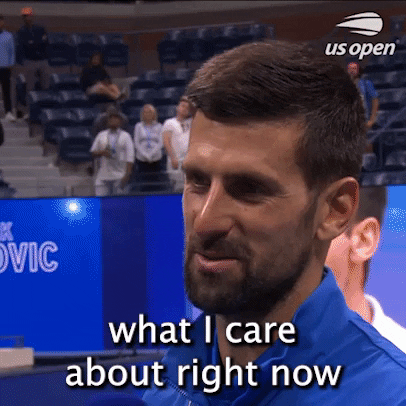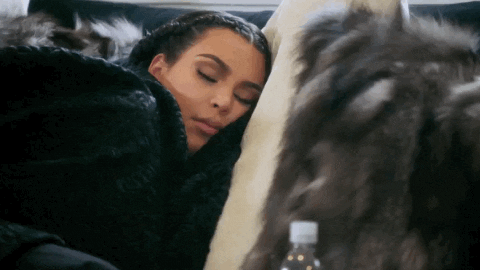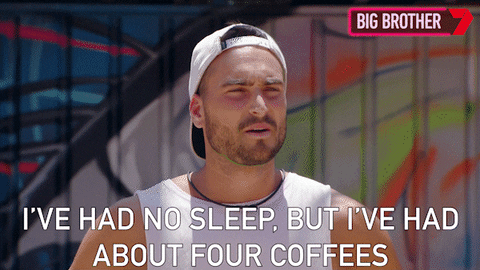“I love sleep. My life has the tendency to fall apart when I’m awake, you know?”
Ernest Hemingway
Before we talk about Headspace, did you know that research shows roughly 40% of Canadians experience some type of sleep disorder at any given time? As an insomniac myself, the struggle is real. I’ve tried all the fixes — not using your phone before bed, setting strict bedtime timings, avoiding caffeine consumption after noon, restricting exciting activities to earlier in the day (yes, really) and even taking melatonin (a hit or miss, if you ask me)… you name it, I’ve tried it.
Unfortunately for me, the bliss of quickly falling asleep is always elusive. And despite using all these ‘hacks,’ the incessant buzzing of thoughts in my head still continues as I lay in the dark; after 20 minutes of frustration, my phone is out and I’m endlessly scrolling on social media again. The icing on the cake? It’s suddenly 3 a.m. and I’m facing down an 8 a.m. finance class with bleary eyes.

That said, I’m always up to experiment in the hope that I’ll find a ‘permanent’ fix, so I decided to try Headspace’s sleep tunes for a week. IGNITE has partnered with Humber’s Information Technology Services to give away free one-year subscriptions of Headspace to students, offering you access to countless tunes to rest, meditate, combat anxiety and sleep. Here’s my honest review after a week:
Longer sleepcasts worked better

Since I take longer than normal to fall asleep, I tended to benefit from setting the bedtime audio length to at least 30 minutes. Anything shorter and I’d still be awake, meaning I had to unlock my phone and pick another tune (leading to choice anxiety as I scrolled for new sleepcasts, which disrupted my sleepyness levels). So, if you’re like me and need time to drift off, you should definitely set your sleepcasts for the duration you prefer by toggling the settings on each of them.
Finding the perfect one takes time

With soulmates and sleepcasts, apparently! Over the week, I realized that some sleepcasts, while relaxing for other people, were very mentally stimulating for me and actually disrupted my sleep. For example, Static with Strings (white noise with synthesized strings) kept me wide awake while Rain Pipes (rain sounds on an organ) worked really well, much to my surprise. Keep browsing the collection until you find what works for you.
Don’t play Headspace tunes too soon

Finding the perfect timing to play sleepcasts was key. If I felt ambitious about sleeping early and did it too soon, I would end up getting frustrated with the noise and turn it off, laying awake in bed. If I played it too late, I couldn’t relax long enough to fall asleep. Through the week, I realized that playing the sleepcasts about 20 minutes before I intended to sleep ensured that it lulled me to sleep before it got too old.
Headspace tunes doesn’t cancel out caffeine

As a workaholic who craves an espresso every hour of the day, I found myself tempted to give into 7 p.m. coffee cravings. I did succumb on two days, telling myself “I’m using Headspace anyway” and that I should be fine. Well… it doesn’t work like that, I learned. While Headspace tunes can gently guide you into dozing off, they can’t combat the effects of caffeine on your brain. So whenever you give Headspace a shot, remember that you’ll still have to follow the ‘rules.’
Guided breathwork before sleepcasts help

How many times have you been told to take a deep breath and calm down? It’s for good reason — slowing your breathing and inhaling deeply is one of the easiest and most effective ways to relieve stress, research slows. I discovered that Headspace’s guided breathwork videos were very helpful in calming me, which made me more receptive to the lulling effects of the sleepcasts. If going straight to sleepcasts doesn’t help, consider doing guided breathwork or listening to other anxiety-combatting audio first.
To sum up my experience using Headspace, I didn’t suddenly become one of those lucky people that fall asleep in a wink (I wish.) However, it most definitely reduced how long it took to fall asleep, and reduced counterproductive habits like scrolling on my phone endlessly, giving me something soothing to focus on instead. I went into the week’s experiment a little sceptical, but I wrapped the week vowing to stick with it and see how much more my sleep could improve.
Feature photo by Ann Danilina on Unsplash
Interested in making your personal space more relaxing? Check out our article on how you can make your environment more zen.
Follow us on Facebook, Instagram and TikTok for all things student life.
